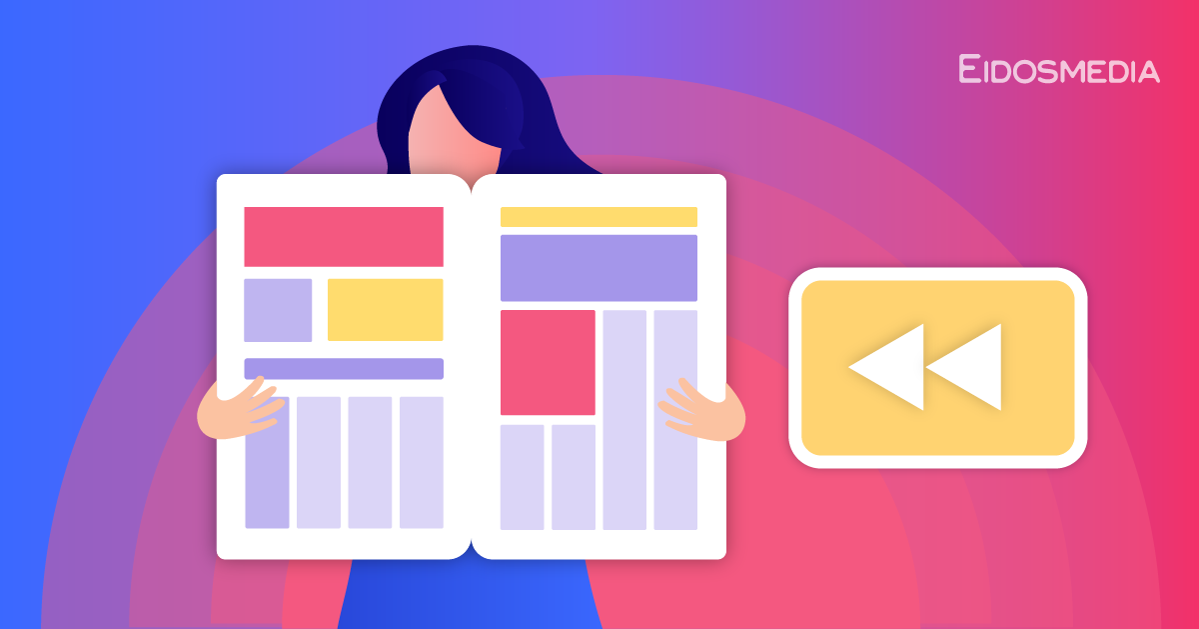Is Print Media Making a Comeback?
Is print media showing new signs of life? Eidosmedia explores the current state of print and the surprising trends prompting publishers to reprioritize their print product strategies.
For years, publishers have been navigating the decline in print media, pivoting monetization strategies to prioritize digital content and scale back on print products. But in an unexpected twist, it appears that a print revival is underway.
What’s resuscitating print, and how do publishers leverage this emerging trend? Let’s take a closer look.
Print news is in surprisingly good health
Though the media landscape has been vocal about the crushing dominance of digital news, the state of print news is, in fact, not as dire as it seems. A 2023 report by News/Media Alliance found that, “Despite the belief that news and magazine media use is often said to be declining, 44% of all adults, or 116 million consumers, read print and/or digital newspapers.” Magazines have fared even better, reaching 223.6 million consumers.
A richer, younger readership
Even more significant is the demographic and behavioral profile of print readers. News/Media Alliance reports that print consumers are “well-educated and have a median household income of $8,000 above the national average” — which Media Max interprets as “greater disposable income and a likelihood of purchasing power, two very crucial factors for marketing strategies.”
Surprisingly, News/Media Alliance also reports that “while nine out of 10 consumers has read magazine media in the last six months, the numbers are higher for younger age groups.” A more recent article by Progress Print Plus, covering the 2025 Niche Media Conference, backs this up with testimony from Gen Z influencer Kelsey Russell, aka “The Print Princess.”
The antidote to 'digital fatigue'?
According to Russell, the appeal of print comes from “digital fatigue.” Paraphrasing Russell, Progress Print Plus writes, “Gen Z lives online — but they’re also deeply aware of the mental toll of nonstop screens. Print offers a breath of fresh air. It invites people to slow down, focus, and really experience content without notifications or distractions.” Trust is another force driving Gen Z to print. “In a world of fake news and disappearing content, print stands out as something credible and lasting.”
Magazines appear to be particularly credible among consumers — and that credibility drives results. News/Media Alliance shares that “80% of readers who see an ad in a magazine take an action as a result, 25% seek more information about the product or service, and 20% visit the advertiser’s website.” As generative AI search queries continue to rob digital publications of web traffic, the action-minded print audience may just be the solution to diminishing digital revenue streams.
What successful print publications are doing right
From big-name publications to indie zines, the new wave of print publications is doing things a little differently. Here are three tactics that have been working for successful print publishers:
- Stick to your niche — Print publications will never be able to compete with the breadth and depth of information available online. Savvy publishers have recognized this limitation and have countered quantity with quality. Publications that serve niche content to specific audiences are rewarded with active, engaged, and loyal consumers.
- Embrace aesthetics — Recognizing the often ephemeral nature of digital content, print publishers have begun leaning into the beauty and tactility of their products. VistaGraphics predicts, “focus will shift towards producing high-quality, collectible editions. Publishers will invest in premium paper, unique designs, and exclusive content to justify the higher price points. This trend caters to a discerning audience who appreciate the tangible experience of a physical magazine.”
- Limit frequency — Again, in opposition to the constant deluge of digital content, print publishers are opting for a monthly or quarterly cadence to create a sense of anticipation. Limiting frequency also helps mitigate the environmental impact of printing, which, according to VistaGraphics, is an increasing concern for audiences: “Consumers are becoming more aware of the environmental impact of their choices, and publishers will need to align their values with these expectations.”
The common theme here is leaning into the innate strengths of print and away from the expectations of digital media. Print shouldn’t try to replicate digital; it should embrace the fact that it’s a uniquely tangible product.
New engagement models
Press Gazette recently highlighted three stories of successful print publications — Stylist magazine, quarterly football magazine Mundial, and Capital Business Media monthly magazine — and though the content and target audience vary considerably, all three publishers have adhered to this advice. Instead of churning out high volumes of content, Stylist, Mundial, and Capital Business Media have all favored a more thoughtful, focused, and limited approach to their publications. Though their respective circulation numbers are far fewer than visits to Google, these publishers have recognized that there is greater long-term value in an engaged, loyal audience than competing for clicks in a cluttered digital space.
Print pagination - closing the gap with digital
One factor driving the dominance of digital over print pagination is the cost of production. And one of the top items in print production costs is the labor-intensive layout of print pages that absorbs many hours of skilled manpower for every edition.
That is about to change. Several daily newspapers being produced in Germany have adopted an AI-driven page layout tool integrated into their Eidosmedia editorial platform that reduces time needed to layout a print section from hours to minutes.
This development has the potential to significantly change the business model for print-format news, streamlining the production process and, by reducing costs, closing the competitive gap with digital formats.

